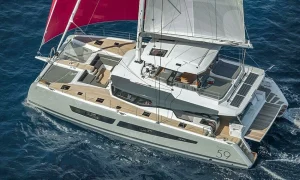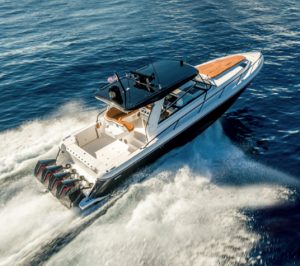Unpowered Boats: A Guide to All the Possibilities and Beyond
Unpowered boats, also known as human-powered boats, are water vessels that do not rely on motorized engines for propulsion. Instead, these boats are moved forward using methods like paddling, sailing, or pedaling. Offering a wide range of possibilities for water sport enthusiasts, unpowered boats continue to captivate the interests of many.
Examples of unpowered boats include canoes, kayaks, rowboats, and wind-powered sailboats. These boats provide a more eco-friendly and health-conscious alternative to motorized watercraft, allowing users to enjoy a peaceful, heart-healthy experience on the water. By exploring the endless possibilities offered by unpowered boats, individuals can find the perfect vessel for their next aquatic adventure.
From leisurely activities like fishing or bird-watching, to more challenging ventures like white-water kayaking or sailing, there is an unpowered boat suited for every skill level and interest. Aspiring boat users must learn about the various boat types and their advantages, enabling them to make an informed decision when choosing their ideal unpowered watercraft.
Types of Unpowered Boats
Unpowered boats, also referred to as human-powered boats, include a variety of watercraft that rely on manual effort for propulsion. These boats come in different shapes and sizes, offering people numerous options depending on their needs and preferences.
Some popular examples of unpowered boats are:
- Canoes: These boats are typically designed for one or two paddlers, with an open deck and pointed ends. Canoes are great for exploring rivers, lakes, and other calm water bodies.
- Kayaks: Slightly smaller than canoes, kayaks are designed for single or double paddlers. They have a closed deck and are primarily used for recreational purposes, fishing, and white-water adventures.
- Rowboats: As the name suggests, rowboats are propelled by rowing with a set of oars. They come in various lengths and are commonly used for recreational boating and fishing on calm waters.
- Wind-powered sailboats: These unpowered boats harness the power of the wind to navigate through the water. Ranging from small dinghies to larger sailboats, they are often used in recreational sailing and racing events.
- Gondolas: Traditional flat-bottomed boats from Venice, Italy, gondolas are steered and propelled by a single person standing at the stern, using a long wooden pole. They are primarily used for leisurely cruising along Venetian canals.
Each of these unpowered boat types has unique features and benefits, making them suitable for specific activities or preferences. The choice of which type of unpowered boat to use depends on factors like personal skill level, desired activities, and the water conditions one plans to navigate.
Advantages and Uses
Unpowered boats offer several benefits to boating enthusiasts, including being environmentally friendly and cost-effective. As they do not use engines, unpowered boats are typically safer for the environment, relying on hand or electric-powered equipment for propulsion (Fishing Boats).
One of the primary uses of unpowered boats is for exercise and spending time outdoors in a low-impact activity. Rowing or paddling provides a full-body workout that is gentle on joints and a great way to stay active. Their simplicity also makes them generally easier to maintain as there is no engine to service.
Different types of unpowered boats cater to a variety of activities, including fishing, leisurely trips, and water sports. For example, dinghies, skiffs, and tenders serve as versatile options that can accommodate various needs, such as transporting people from larger vessels to shore (Life Lanes).
Unpowered boats are especially attractive for sailing enthusiasts. Catamarans and trimarans, which are multi-hull boats, have distinct performance advantages, such as faster speeds and increased stability (Boats.com). Additionally, the hull shapes of catamarans lend themselves to increased speed due to their lower drag and increased stability due to the distance between hulls (Boats.com).
Maintenance and Storage
Maintaining an unpowered boat involves a few essential steps, ensuring its longevity and peak performance. Regularly cleaning the boat, inside and out, is crucial to prevent dirt, mildew, and algae buildup. Use a soft sponge or brush and stick to boat-specific cleaning products, safe for both the environment and your boat's surface. Proper care of the hull prevents unnecessary wear and tear and maintains the boat's aesthetics according to Boat Safe.
When cleaning the boat's interior, pay special attention to the seats and upholstery. Consistently wiping down the surfaces helps avoid dirt and mold growth. Furthermore, consider using protective covers on vinyl seats between outings for added protection, as suggested by the Neighbor Blog.
Since unpowered boats typically have fewer mechanical components, storage and maintenance revolve around protecting the boat from environmental factors such as moisture and UV damage. Adequate storage facilities ensure the boat's safety, whether it's indoors or outdoors. Indoor storage offers an added layer of protection against the elements but might come with a higher price tag.
For outdoor storage, opt for a high-quality boat cover that is resistant to water, mold, mildew, and UV light. Additionally, make sure the cover is well-secured to prevent it from blowing off during harsh weather. Removing any detachable equipment, such as oars or paddles, can provide extra security during the boat's storage.
Safety Tips
Unpowered boats offer a peaceful and environmentally friendly way to enjoy the water. However, safety should always be a priority. Here are some essential safety tips for unpowered boating:
Always wear a personal flotation device (PFD). Properly fitted life jackets are crucial for everyone on board, regardless of their swimming abilities. Make sure to have enough PFDs for all passengers and follow local regulations regarding their use.
Keep a close eye on weather conditions. Check the weather forecast before setting out, and be prepared to adjust your plans if necessary. Sudden changes in weather can make it difficult to navigate or control an unpowered boat, especially during storms or high winds.
Be aware of local boating regulations. Familiarize yourself with the rules, regulations, and navigation aids specific to your location. Observe speed limits, no-wake zones, and follow right-of-way rules to ensure a safe boating experience for everyone on the water.
Equip your boat with the required lighting for nighttime or low visibility conditions. According to the Boat-ed, unpowered boats less than 23 feet long should have proper lighting while underway during these conditions. This includes a masthead light, sidelights, and a stern light or an all-around light.
Properly secure and maintain your boat. Keep your unpowered boat in good condition by regularly inspecting it for damage, leaks, or wear. Ensure that all equipment, such as oars, paddles, and sails, are properly maintained and stored when not in use.
Lastly, it's essential to practice good communication when on the water. Let someone on shore know your intended route and expected return time. Keep a whistle or air horn handy for signaling in case of emergencies, and always carry a fully charged cell phone or VHF radio.
Buying Guide
When it comes to purchasing an unpowered boat, there are several factors to consider before making your decision. This guide will help you navigate through the key aspects and features to look for in the best unpowered boat for your needs.
Types of Unpowered Boats
Unpowered boats come in various shapes, sizes, and forms, each designed for specific purposes. Some of the most common types are:
- Rowboats
- Canoes
- Kayaks
- Stand-up paddleboards
- Sailboats
- Inflatable boats
Intended Use
Before choosing an unpowered boat, consider how you plan to use it. Different types of boats are better suited for specific activities, such as fishing, exploration, or leisurely paddling.
Size and Capacity
The size and capacity of an unpowered boat are crucial for both comfort and safety. When selecting the right boat, consider the number of people who will commonly accompany you, as well as the amount of gear and supplies you will need.
Material and Construction
Unpowered boats can be constructed from a variety of materials, such as wood, fiberglass, plastic, or inflatable fabric. Each material has its pros and cons, so it's essential to choose the one that best fits your needs and preferences. For example, a wooden boat might have a classic appearance but require more maintenance than a plastic one.
Portability and Storage
Another important factor to consider is the portability and ease of storage for your unpowered boat. Smaller boats like kayaks and stand-up paddleboards can be easily transported on a car roof rack, while larger vessels like sailboats may require a trailer. Also, think about where you will store the boat when it's not in use, as this can impact your choice.
Budget
Finally, consider your budget when choosing an unpowered boat. Prices can vary significantly depending on the type, size, material, and additional features.
Conclusion
Unpowered boats offer a wide range of possibilities for recreational and professional activities. They can be found in various forms such as rowboats, paddleboats, pedal boats, and canoes. These vessels provide an eco-friendly, quiet, and often affordable alternative to powered boats, ideal for those who prefer to enjoy water activities in a more serene environment.
While considering unpowered boats, it is essential to understand their limitations and capabilities. For example, they generally require more physical effort for propulsion and may not be suitable for long-distance travels or heavy loads. However, they are perfect for leisurely activities on calm waters, such as fishing, bird watching, or simply enjoying the beauty of nature.
When choosing an unpowered boat, potential users should carefully consider their specific needs, preferences, and boating environment. Factors such as size, material, stability, and ease of use all play a role in selecting the perfect boat. It is also important for users to be aware of local regulations related to registration and launch permits to ensure successful and hassle-free enjoyment of their boats.
In conclusion, unpowered boats present a versatile and sustainable means of enjoying water-based activities. With the right boat and a clear understanding of its capabilities, users can savor the tranquility and closeness to nature that unpowered boating offers.











